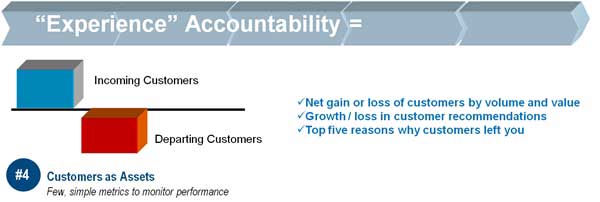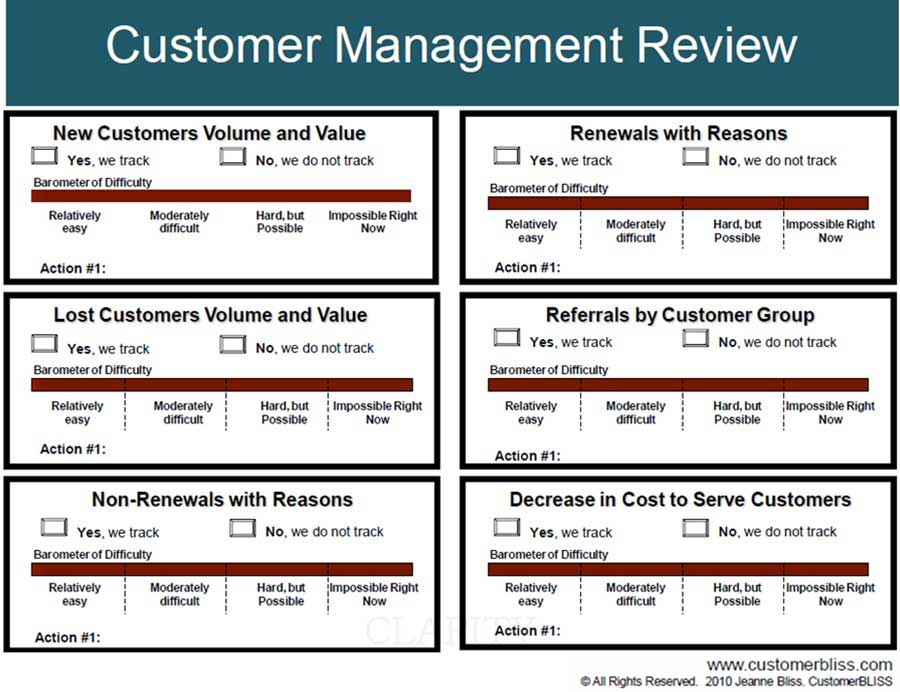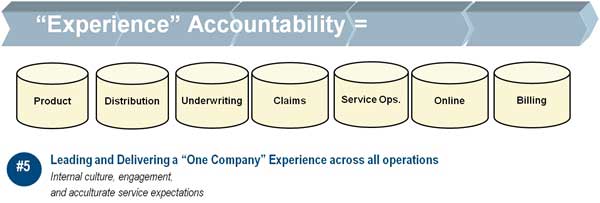To make customer experience stick as part of your operation, you need to have an organized and phased approach for integrating it into your organization.
Here, based on working with scores of clients from around the world, is the real-world approach for how to integrate customer experience into your operation—in a way that will make it stick and change how you do work.
This is Part 2 (of two parts) of the Customer Experience Leadership Survival Guide. Part 1 discusses the first three focus areas.
Focus No. 4: Making Customers an Asset of Your Business
I call this focus area "customer math." And it's about building passion across the organization and establishing a simple rallying cry for leaders.
Rather than talking about customer retention, begin each meeting with numbers and data addressing the following:
- Net gain (or loss) of customers for the period
(incoming customers – outgoing customers = net gain or loss) - Number of customers who recommended us
- Top five reasons why customers left

Many companies need to define "incoming" customer because, frequently, each silo has a different definition, and data and databases are not aligned.
This focus area essentially deals with the outcome of the experience you are delivering to customers; I call it "customers vote with their feet"—i.e., they stay or leave. And I have found it very powerful to begin meetings with this simple report card, which describes whether you have "earned the right" to customer growth.
For one client, we wanted a visual to depict the outcome of the customer math each month or quarter, so we came up with a unique idea that used marbles. We determined the equation for the number of customers a single marble would represent. Then we began every meeting with two bowls of marbles: one representing the lost customers, and one representing new customers. It really got people's attention when the bowls were even or when the "lost" marbles exceeded the "new" marbles.
Decide whether that simple way to begin meetings and give leaders something to be passionate about regarding customers will help your company. Then determine your own version and how to communicate it across your organization—in your own unique style.
Below is an audit you can begin with; we cover it in one of my Chief Customer Officer Boot Camp sessions.

Focus No. 5: "One Company" Customer-Experience Culture

This focus area is about leadership, organizational dynamics, and communication. The companies that are most successful at the customer-experience work address that work across the silos and also address how leaders enable the organization to work together.
At this stage, we take up the human issues that are so critical to holding a place in customers' hearts. How are leaders enabling the organization to work? How are decisions made? What are people rewarded and recognized for?
Begin by creating simple and clear actions for leaders, the folks in the middle, and those on the frontline for working together. For leaders, how do they get rid of the roadblocks? For the middle, how do they work together across the silos and get rid of some of their own policies and procedures that they "own" but that get in the way of a united experience? And how do they make decisions as they do their work? For the frontline, how do we hire folks with our core values, and how do we enable and train them to bring the best version of themselves to work? How do we involve them in the customer-experience work?
This part of the work frequently requires the "heavy lifting" of getting traction. Often I lead workshops to help organizations get on the same page and pass on the materials and slides so that those conversations can be continued throughout the organization.
To get started, I suggest these simple steps you can take without spending much money. All it requires is passion, commitment, and making customers a priority.
1. Call lost customers and play those calls for everyone
Every month, have your executives call at least five customers who have left. Tell the customer how sorry you are that the customer left your company and then ask if the customer could explain what happened. Then, stop talking and just listen.
Those calls will get the voice of the customer into the ear of the people who can make change. And there is nothing like those calls to change how we usually think of customers—as survey data or retention rates. Get customers' permission to record those calls, and play them and talk about each experience that customers were disappointed in.
By doing so, you will gain traction for your efforts as folks in your organization see that the execs are committed to and talking about customers and the experiences they are having.
2. Be a customer
Commit everyone in your organization to do one thing once a month that customers do, such as buy a product on your site, file a claim, redeem a coupon, etc., and then talk about the process. Fix what doesn't make sense or isn't working.
3. Connect with the frontline
At Lands' End, we brought in about 20 people every few months from all the frontline operations—the phone folks, pickers and packers from the warehouse, etc.—and had them sit in a circle around the company president. They talked, and we listened and took notes. We believed their version of how they were treated and how customers were treated, and we made changes based on what they said. Try something like that. Make sure that you actively listen to the frontline folks and, most important, believe what they say—and take action.
4. Do customer math, and talk about lost and gained customers in every meeting
Initiate your version of the bowl of marbles and talk about it at every meeting. Relate that customer gain or loss to what has been heard in those customer calls, to what the frontline folks are saying, and to what you experience when you become a "customer" of your company. Then talk about it all as experiences—and start driving accountability in cross-functional teams to fix experiences—not silo problems.
* * *
With an understanding of the five focus areas, you can make a difference in your organization affecting the alignment with customers and the resulting customer loyalty. If you have any questions, contact me.




